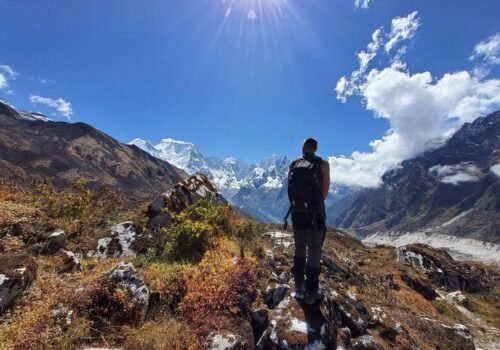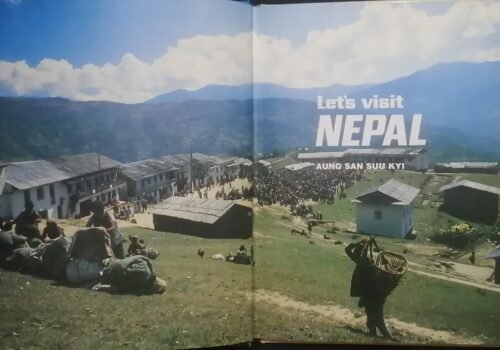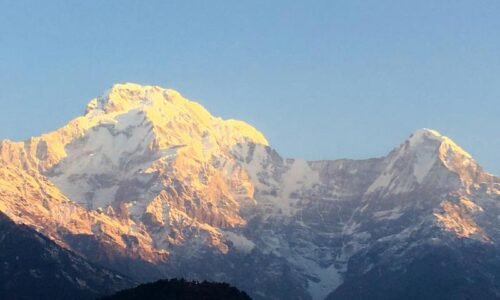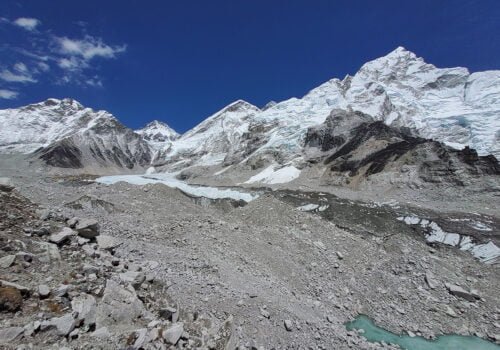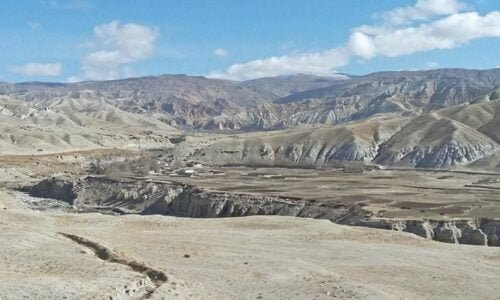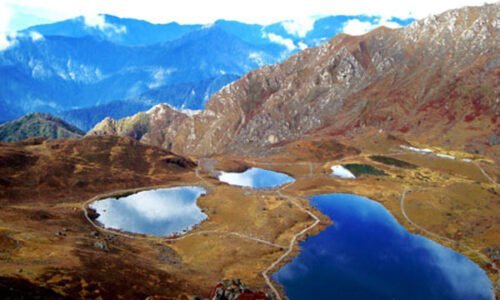Everest Region Short Trek Packages
23 Dec 2022 10 min to read
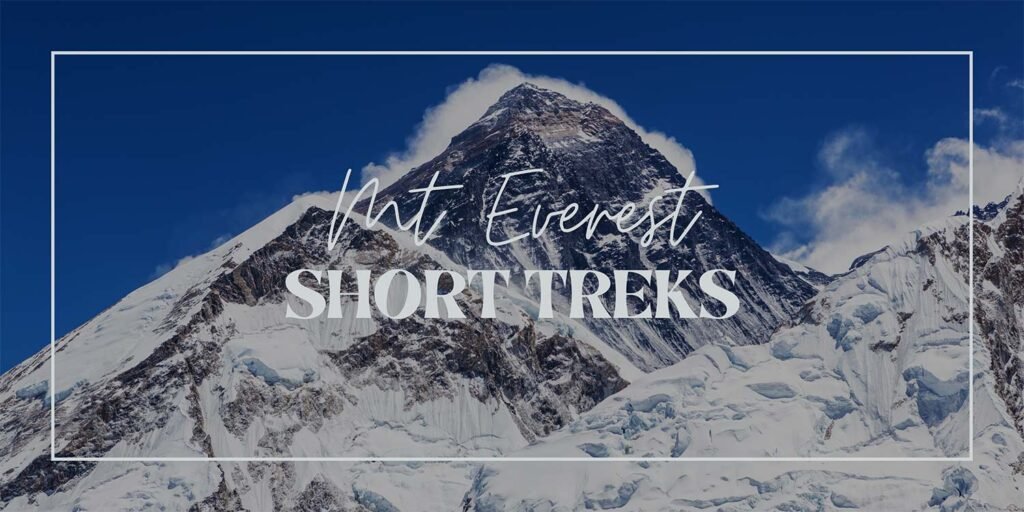
Everest Region Short Trek Packages! The Everest region of Nepal is home to some of the world’s most iconic and challenging mountain peaks, including Mount Everest itself. Many trekkers travel to the Everest region for trekking and expedition. The Everest region’s trek duration lasts for more than a week. If one’s planning a trip to the Everest region, there are a number of short trekking options as well. It allows you to explore the region and experience the stunning natural beauty of the Himalayas. Some of the Everest region’s short treks are:
Everest Base Camp Trek
The most popular trek in the Everest region is the Everest Base Camp Trek. This trek offers you the best breathtaking sceneries of Mount Everest, Lhotse-Nuptse Wall, Ama Dablam, the colorful largest Tengboche monastery, lovely Sherpa capital Namche, and short hikes to the beautiful nearby villages.
Everest Gokyo Lakes Trek
One popular short trek in the Everest region is the Gokyo Lakes Trek, which takes you through the beautiful Gokyo Valley. It takes you to the highest freshwater lake system in the world. The trek typically takes about a week to complete. The ascent to Gokyo Ri for the stunning views of the surrounding mountains, and the Gokyo Valley is phenomenal. Enjoy the spectacular views of Everest, Cho Oyu, Makalu, and Lhotse.
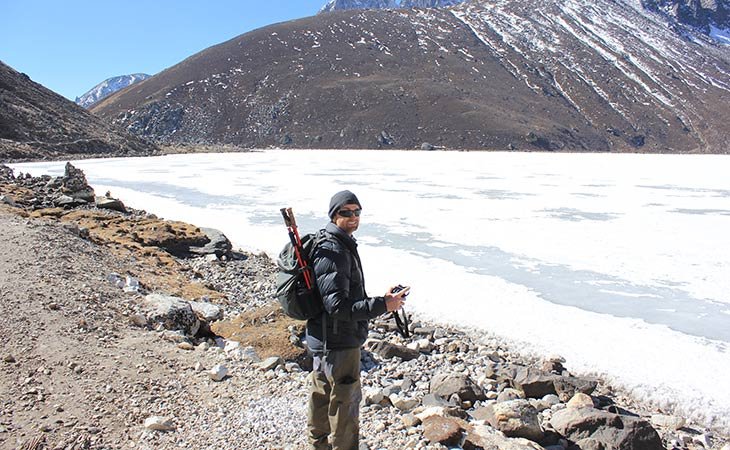
Everest View Trek
Another option is the Everest View Trek, which takes you to the village of Namche Bazaar. A short hike to Khumjung village and Everest View Hotel offers you panoramic views of the Everest region. It is one of the ideal option under Everest region short trek packages.
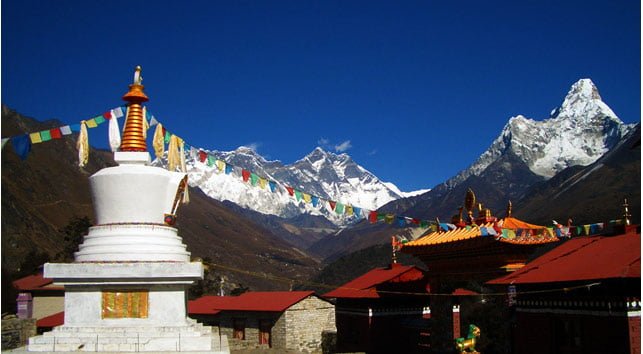
Thame Trek
The Thame Trek is a short and popular trekking route in the Khumbu region of Nepal, which is located in the eastern part of the country. Adore the stunning natural beauty, including forests, alpine meadows, and snow-capped peaks in this region. The trek typically takes about a week to complete and takes you to an elevation of 3,792 meters (12,441 feet) at the top of Thame Pass. The pass offers breathtaking views of the surrounding mountains, including Mount Everest, Makalu, and Lhotse. One of the highlights of the Thame Trek is the opportunity to visit the famous Thame Monastery, which is one of the oldest and most important monasteries in the Khumbu region.
Everest Panorama or Tengboche Monastery Trek
The Everest Panorama or Tengboche Monastery Trek is famous for its short duration and non-demanding. Since non-experienced trekkers can also complete this trek, this trek is a favorite among the short treks in the Everest region. Enjoy the panoramic Himalaya sceneries and visit the largest Tengboche Monastery in the region. Mani Rimdu festival with its different cultural and colorful mask dance held in the Tengboche Monastery is the major attraction during October/November full moon day. Get an awesome glimpse of Mt. Everest including other snow-capped peaks and picturesque panoramic beauties of the Himalayas. Also, get familiar with the Sherpa culture in its place of origin.
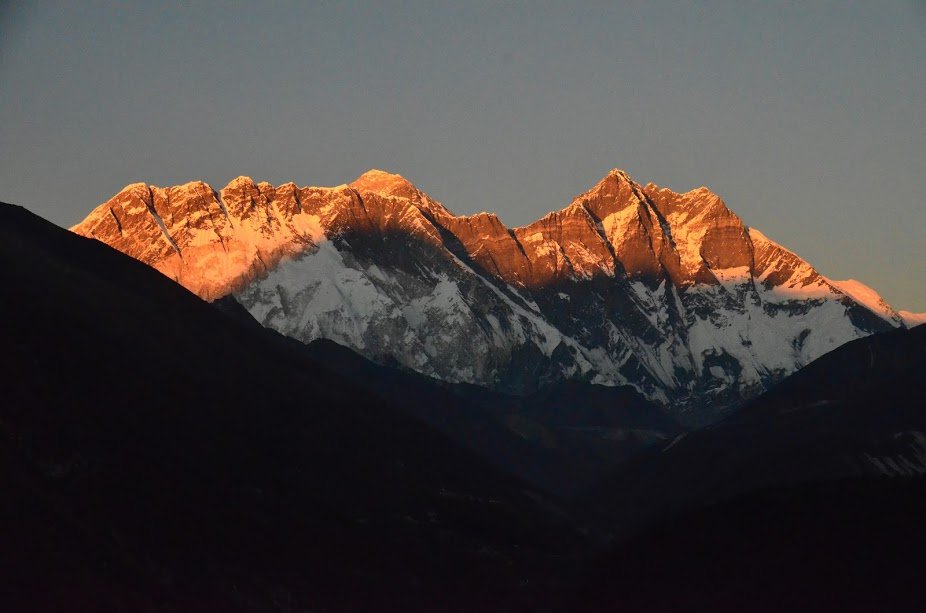
Pikey Peak Trek
Pikey Peak Trek is a newly discovered trek route in the Everest region. This is the best alternative for short treks in the Everest region because it is less crowded. Pikey Peak trek takes you to an elevation of 4,067m which offers breathtaking views of the surrounding mountains, including Mount Everest, Makalu, and Kanchenjunga.
Regardless of which trek you choose, it’s important to be properly prepared and acclimatized to the high altitude before embarking on any trek in the Everest region. It’s also important to hire a reputable trekking guide and obtain the necessary permits and insurance.
Everest Helicopter Tour
In the Everest region, there are plenty of short trek options. But, for those who want to explore the Everest region but have limited time or are differently abled or constrained by age, Everest Helicopter Tour is also available. One can enjoy the close-up views of Mount Everest and adjacent snowy mountains along with the huge glaciers, glacial lakes, gorges, and rivers. Besides this, witness the excellent scenery of the changing landscape from the helicopter.

Everest Region Trek Types & Trek Routes
Everest Base Camp Trek:
Lukla-Phakding-Namche Bazaar-Tengboche-Dingboche-Lobuche-Gorakshep-EBC-Gorakshep-Kalapatthar-Pheriche-Tengboche-Namche Bazaar-Lukla
Everest Gokyo Lake Trek:
Lukla-Phakding-Namche Bazaar-Dole-Machhermo-Gokyo-Excursion to Gokyo Lake/Ascent Gokyo Ri-Dole-Namche Bazaar-Lukla
Everest View Trek:
Lukla-Phakding-Namche Bazaar-Hike to Khumjung/Everest View Hotel-Monjo-Lukla
Thame Trek:
Lukla-Phakding-Namche Bazaar-Hike to Thame-Lukla
Everest Panorama/Tengboche Monastery Trek:
Lukla-Phakding-Namche Bazaar-Tengboche-Namche Bazaar-Lukla
Pikey Peak Trek
Dhap Bazaar-Jhapre-Pikey Base Camp-Junbesi-Phaplu
Travel Info
Accommodation
Accommodation options in the Everest region range from basic but comfortable guesthouses to more luxurious lodges. Many trekking routes have several guesthouses and lodges along the way, but it’s a good idea to book ahead, especially during peak season. One must pay the extra cost for the use of Wi-Fi, electricity, laundry, and hot water.
Food and water
During your trek, one can have the opportunity to try local dishes such as dal bhat, which is a traditional Nepali meal consisting of rice and lentil soup. Besides Dal-Bhat, plenty of options like noodles, Sherpa stew, soup, bread, eggs, and hot drinks are also there. One can also enjoy continental dishes at Namche Bazaar. Drinking water is everywhere available which is fresh and pure. But, it’s always a good idea to bring a water filter or purification tablets to ensure that you have a reliable source of safe drinking water.
Communication
In the Everest region, Everest Link’s Wi-Fi card is a reliable internet provider. Since our treks are short and mostly in the lower part of the Everest region, the network is stable. Even mobile networks are also stable. One can purchase the local Sim card for calling and use a data pack to use the internet.
Transport
The Everest region is far from the capital Kathmandu. Hence, the best means of transport in the Everest region is to take flight. Riding a vehicle or taking roadways is also possible but it takes longer duration and consumes time as well. Since this is our short trek, taking a domestic Lukla flight is the only perfect choice. Ultimately, Lukla is the starting point of most of the short treks mentioned above.
Only for Pikey Peak Trek, take a vehicle ride from Kathmandu to Dhap and start the trek from Dhap Bazaar. Only while returning, take a flight from Phaplu during this Pikey Peak Trek.
Travel Insurance
If you’re planning a trip to the Everest region of Nepal, it’s a good idea to purchase travel insurance to protect yourself against unexpected events or emergencies that may occur during your trip.
When looking for travel insurance for the Everest region, it’s important to find a policy that covers high-altitude trekking. Specifically, look for a policy that does cover all essential activities. Consider the following things while purchasing travel insurance for the Everest region:
- Coverage for medical emergencies
- Coverage for trip cancellations or interruptions due to an unforeseen event
- Coverage for lost or stolen belongings
- Coverage for high-altitude trekking
- Coverage for emergency evacuations
Best time to visit
The best time to visit the Everest region depends on your specific interests and activities. If you’re planning a trek, the best time to visit is typically from Spring (March to May), and Autumn (September to November) seasons. During these seasons, the weather is clear, bright, and generally the most stable. The summer season is the least favorable followed by winter and rainy seasons. It is riskier to trek in these seasons due to the slippery trails and unstable weather. Plan properly and prepare accordingly before starting this trek.
How to get there?
The Everest region can be accessed from Kathmandu, the capital of Nepal, by taking a short flight to the town of Lukla. From there, you can follow several different trekking routes through the region.
Required Permits & its Cost
The compulsory permits for the Everest region treks are:
- Khumbu Rural Municipality permit costs:
- Foreigners- NPR 2000
- SAARC- NPR 1000
- Sagarmatha National Park (SNP) permit costs:
- Foreigners- NPR 3000
- SAARC- NPR 1500
How long does it take to issue the permit?
It only takes a few hours to issue the permit. Trekkers must submit all the required documents to the travel agency.
Where to issue the permit?
For the Everest region treks, we require Khumbu Rural Municipality Permit and Sagarmatha National Park (SNP) Permit. One can issue an SNP permit either from Tourist Service Centre, Exhibition Road, Kathmandu, or Monjo in the Everest region. For Khumbu Permit, one must issue the permit at Lukla as it is imposed by the local government. Since all permits are taken care of by the travel agency, trekkers needn’t worry much.
Just submit the following documents to the travel agency to issue the permits.
- Passport photocopy with 6 months validity
- 4 Passport size photos
- Nepali Visa with the arrival stamp
- Travel Insurance papers (all essential things must cover)
- Flight tickets photocopy
- Agreement Letter to trekking company and Immigration Head
Everest Region Short Trek Difficulty
Everest region’s short trek is mostly in the lower regions. Therefore, it is moderately difficult. Trekkers might find the elevation and trail structure a bit demanding. But, no need to worry as it is achievable. Just trekkers need to be physically and mentally fit. So, the best advice is to participate in short hikes at high altitudes before starting the trek. Take necessary health check-ups and eat a healthy diet. Do some physical training exercises and yoga or meditation for sound mental health. Having said this all, our support is always there throughout your journey from the start to the end.
Porter Luggage limitation
The luggage limitation is a maximum of 15 kg per trekker. One porter carries the luggage of two trekkers. The luggage limitation is planned considering the health of the porters.
Altitude Sickness & its Symptoms
Altitude sickness, also known as acute mountain sickness (AMS), is a common condition that can occur when you travel to high altitudes, typically above 2,400 meters (8,000 feet). It is caused by reduced air pressure and lowered oxygen levels at high altitudes, which can affect the way your body functions. In the Everest region, altitude sickness is natural.
Symptoms of altitude sickness can vary from person to person, but common symptoms include:
- Headache
- Dizziness or lightheadedness
- Fatigue or weakness
- Shortness of breath or difficulty breathing
- Loss of appetite or nausea
- Insomnia or difficulty sleeping
- Swelling of the hands, feet, and face
Preventive Guidelines
There are several preventive guidelines one can follow to reduce the risk of developing altitude sickness when trekking at high altitudes in the Everest region:
- Acclimatize gradually for adjusting to the surroundings
- Stretch the body and do some warm-ups before the trek
- Ascend slowly to give the body time to acclimatize
- Drink plenty of fluids to prevent Dehydration and urinate frequently to help the body function properly
- Avoid alcohol and caffeine, and salty foods
- Avoid strenuous activity
- Get plenty of rest to allow the body time to recover and adjust to the lower oxygen levels
- Make sure to get plenty of sleep and take regular breaks to rest
- Use an oxygen cylinder if necessary in case of difficulty
- Immediately consult with a guide and seek medical attention if necessary
Equipment checklist
Essential Documents: Passport, Travel Permits, Visa Photocopy, Passport size photos
Food: Light snacks, Energy bars, and drink mix
Shoes: Camp shoes, Pair of hiking boots, Rubber sandals
Clothes: Windcheater jacket, Thermals, Insulating Down Jacket, Fleece, Long sleeve shirts, Gloves, Towels, Inner garments, Trekking pants, Trousers, Shorts, Socks, Raincoat, Balaclava, Bandana, Gaiters
Accessories: Sunglasses, Hats/Caps, Sunscreen, Lip Balm, Water bottles, Pocket Knife, Solar chargers, Batteries, Head Lamps, Torch, Umbrella, Sewing kit, Water Purifying solution kits, reusable bags to deposit waste, separate clean/dirty clothes
Equipment: Warm Sleeping bags, Map, Trekking poles, Duffel bag
“We invite you to join us on a journey through the heart of the Himalayas. Let us help you plan your dream trek in the Everest region.“
